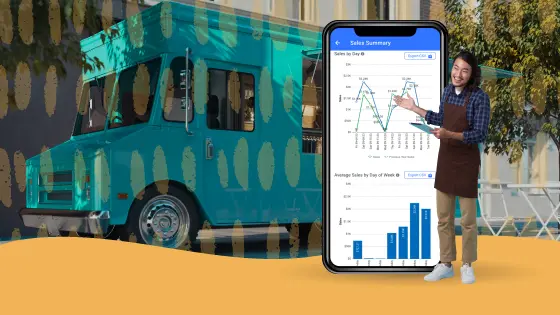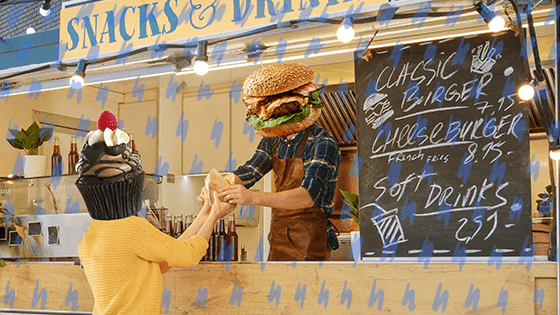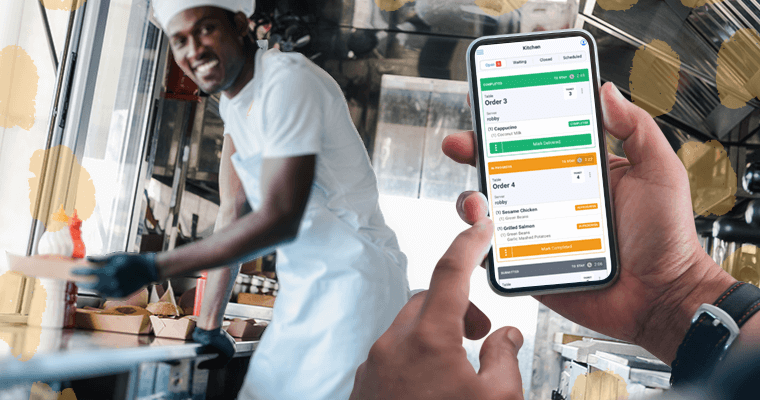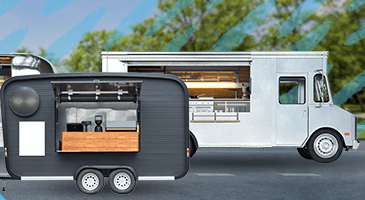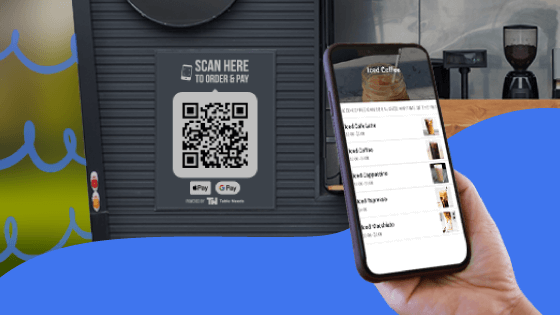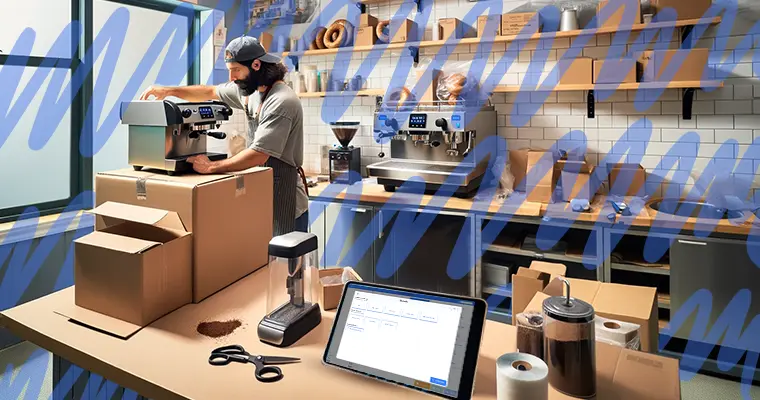There’s a lot to think about before starting a food truck business. From getting the business set up and securing permits to nailing your menu and marketing, it can be overwhelming!
This guide will walk you through everything you need to know before starting a food truck business to make sure you’re set up for success.
4 Steps to Starting a Food Truck Business
Ready to learn the nuts and bolts of starting a food truck business? The following 4 steps will give you the foundation you need to make it happen!
Step 1: Establish your food truck business
As with starting any new venture, do your homework. When it comes to starting a food truck business, this means figuring out how to establish a food truck LLC, write your food truck business plan, and create a budget.
Starting a food truck business also requires more specific licenses, permits, and insurances than other types of business. Check with your local township and county all the way up to the state level to ensure that your business is compliant.
>> Pro Tip: If this sounds like a lot, you’re not alone! Table Needs Filer can help you file all the legal paperwork you need to start your business in one place. Learn more here.]
Step 2: Create your food truck menu
Once you’ve gotten the legal side of things taken care of for starting a food truck business, you can move on to the fun part — creating your food truck menu. If you’re starting a food truck business for the first time, there are a few key things to keep in mind when developing a food truck menu.
First, keep it simple. A smaller menu that you can execute perfectly will do more for you than a huge menu that you can’t keep up with. A smaller menu also will help you keep your costs down by keeping your shopping list smaller and reducing waste.
Second, create dishes that share ingredients. Multiuse is the name of the game for small kitchens. Everything you buy should have multiple uses, which reduces the amount of items you need to prep and stock and, again, helps reduce waste.
Third, create multiple menus. If you have more ideas than you can reasonably keep on your standard menu, consider creating different menus for different occasions. Maybe you have a specific weekend menu, a seasonal menu or offer more personalized options for when you cater events.
>> Pro Tip: Table Needs helps you build and offer multiple menu items simultaneously in one platform, making managing multiple menus super easy. Learn more here.
Step 3: Choosing equipment for your food truck business
When starting a food truck business, you’ll certainly need kitchen equipment and service items as well as other operational equipment to help you accept payments and manage orders. Here’s a quick breakdown of what you’ll need.
Kitchen Equipment: Although there will likely be specific items you’ll need for your unique food truck menu, there are standard kitchen items to get when starting a food truck business. Think through all these basics like a fridge, grill, pans, and cooking utensils.
Safety Equipment: First and foremost, fire extinguishers. Now consider the mobility element… your equipment will shake as you drive your truck so add latches, bungee cords, and other harnessing equipment to your list now.
Service Items: This is a two-parter. First, decide how you want to share your menu. The choices range from reusable chalkboards and white boards to plastic signs and dynamic digital menu boards. Next make a list of all the items you’ll need to serve your food truck’s customers, like plates, bowls, napkins, utensils. Don’t forget about condiments!
Operational Equipment: No matter what kind of cuisine you serve, there are a few more basics that you need to keep your truck running smoothly, like a point of sale (POS) and kitchen display (KDS) systems. These will help you keep track of all your orders and process all payments without any of the stress of paper tickets.
Power Equipment: Other basics, like a power generator and internet connection, are necessary to power your truck and allow you to smoothly run your POS system on the go.
>> Pro tip: Processing payments is only a small part of operating your food truck business. Table Needs makes it even easier with QR code ordering, baked-in KDS, and simple sales tax automations. Learn more here.
Step 4: Marketing your truck
Once you nail the paperwork, the menu, and the equipment required for starting a food truck business, it’s time to get the word out. Scout locations in your area and see where other food trucks are, where your ideal customer is, and what time of the day is best for which location.
Social media for food trucks is also hugely important. Since you’re mobile and may be in new locations all the time, use social media to let your customers know where you are and what you’re seeing and loving in that neighborhood.
As you build a following, it’ll become like a game for your followers to see where you are and come get their favorite menu item from you.
Use social media to also highlight your menu, especially when you first start a food truck. Striking visuals are a great way to show off your food and create a name for yourself.
>> Pro Tip: Learn the art of delegation but putting your marketing needs into capable hands of food industry experts. Table Needs Marketer is a great way to streamline your marketing efforts so you can focus on the food. Learn more here.
Top tips for starting a food truck business
Even though there’s a lot to consider when starting a food truck business, taking it one step at a time (and having a little Table Needs support) will make it more manageable.
Here are four quick food truck tips to help you start a food truck:
- Do a soft opening to figure out what works and what doesn’t. This will also help you generate buzz and word of mouth while you still have a little bit of a grace period.
- Start small! You can always grow, but it’ll be easier and less overwhelming to start off with a smaller and more manageable operation than to start too big and have to scale back.
- Stay connected with other food truck owners and your community. This will help when times get tough, but also will make you feel more connected and give you purpose.
- Remember why you started! Owning a restaurant is tricky, and food trucks are no exception. Remember that people need to taste your food and see what makes you you!
Starting a food truck business is definitely a juggling act, but we’re here to help! Get started with our totally free Food Truck Menu Guide that will show you step-by-step how to create a profitable food truck menu.


